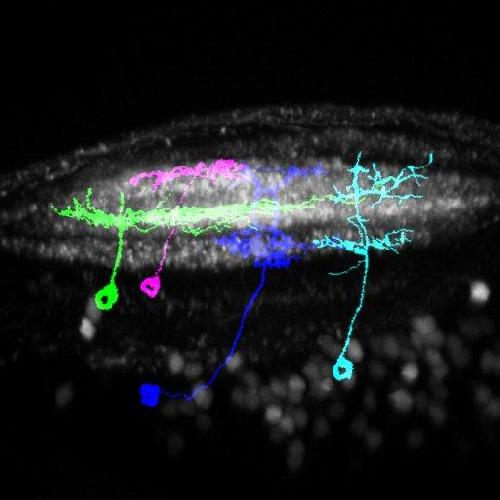New research from the Department of Developmental Neurobiology at the Institute of Psychiatry, Psychology & Neuroscience, King's College London, sheds light into the role of layers in the brain. The study, published today in Neuron, shows that the formation of layers speeds the development of neuronal circuits although, surprisingly, it is not crucial for the establishment of functional and cell-type specific connections.
Our brains contain billions of neurons connected by trillions of synapses. Despite this enormous complexity the pattern of connectivity in the brain is highly ordered and stereotyped across individuals of the same species. A common organisational feature of the brain is the arrangement of synaptic connections into layers. Why the brain organises itself this way is not known. A clue to the significance of layers in the brain comes from the observation that synapses are not randomly distributed amongst different layers. Instead a particular layer will contain synapses between specific neuronal subtypes resulting in the formation of layers that contain synapses with similar functional properties. Thus, an attractive idea is that lamination of the brain during development is a necessary step in the development of synapses between specific neuronal subtypes, i.e. layers ensure that cell type A will only connect to cell type B and not to cell types C and D, for example. However, there is little experimental evidence demonstrating a role for layers in establishing cell type-specific connections between neurons.
The researchers from the Department of Developmental Neurobiology, Nikolas Nikolaou and Martin Meyer, used the visual system of zebrafish as a model system to provide novel insights into the role of layers in the brain. The main visual area of the zebrafish brain, the optic tectum, receives input from the eye via the axons of retinal ganglion cells (RGCs). These axons are organised as a highly precise laminar array within the tectum. In zebrafish astray mutants, which carry a mutation in the robo2 gene, the layered arrangement of RGCs in the tectum is lost. The authors used the astray mutant to study how loss of a layered neural architecture impacts the functional development of connections between RGC axons and their target neurons in the tectum. The study focuses on the development of direction-selective circuits that enable the animal to tell which direction objects are moving in.

A surprising finding of the study is that in relatively mature astray zebrafish larvae the functional properties of direction-selective circuits are identical to those seen in normal zebrafish. What's more, the authors found that RGC axons managed to connect with their intended target neurons in the astray mutant tectum. These findings indicate that the formation of layers is not necessary for establishing functional and cell-type specific connections. Furthermore it was found that the role of the robo2 gene was to guide the growth of not only RGC axons but also their target neurons to a common lamina.
If layers are not ultimately required for the formation of functional neural circuits then what are they for? One idea is that by guiding the growth of matching neurons to a common layer, Robo2 facilitates contact between neurons. Such a mechanism would speed up the process of circuit assembly. To test this idea the authors performed the same set of experiments on much younger larval zebrafish. In these young animals there was a profound deficit in the development of direction-selective circuits. Collectively, these findings suggest that a layered neural architecture is ultimately dispensable for the correct wiring of circuits, but that lamination is essential for the rapid functional development of these neural networks.
'By showing that lamination speeds the functional development of circuits in the brain we have provided experimental evidence showing what layers are for. For larval zebrafish, which are crucially dependent on vision for survival, speed really matters,' said Nikolas Nikolaou the first author of the study.
Martin Meyer, the senior author of the study, said, 'Our study also reveals how strikingly plastic and adaptable the developing brain is. The fact that neurons can eventually find one another and ultimately form functionally normal connections when lamination cues are lost was something that we had not expected. Perhaps by understanding such plasticity we can gain important insight into how to repair circuits that are damaged by trauma or disease.'




Comments